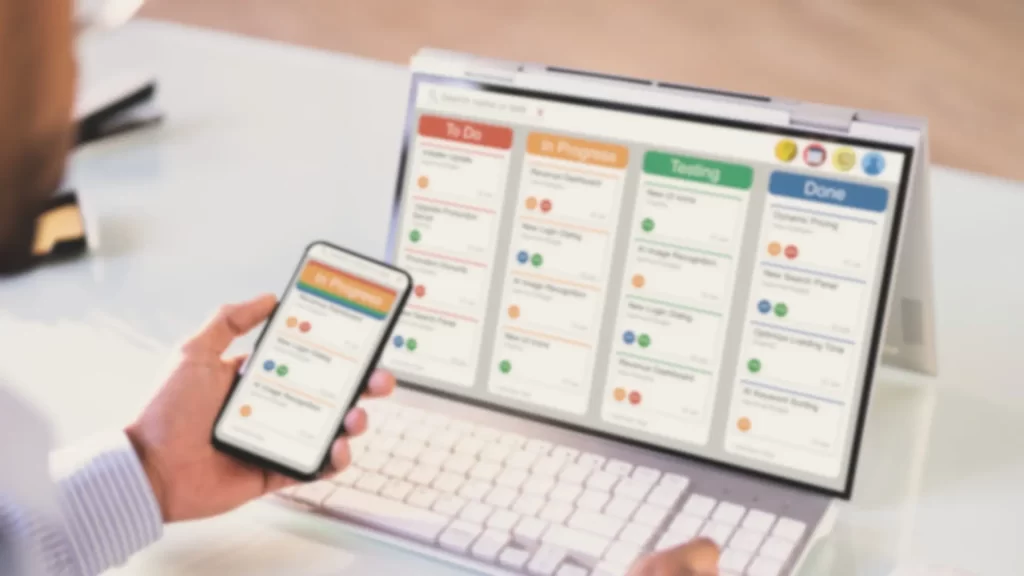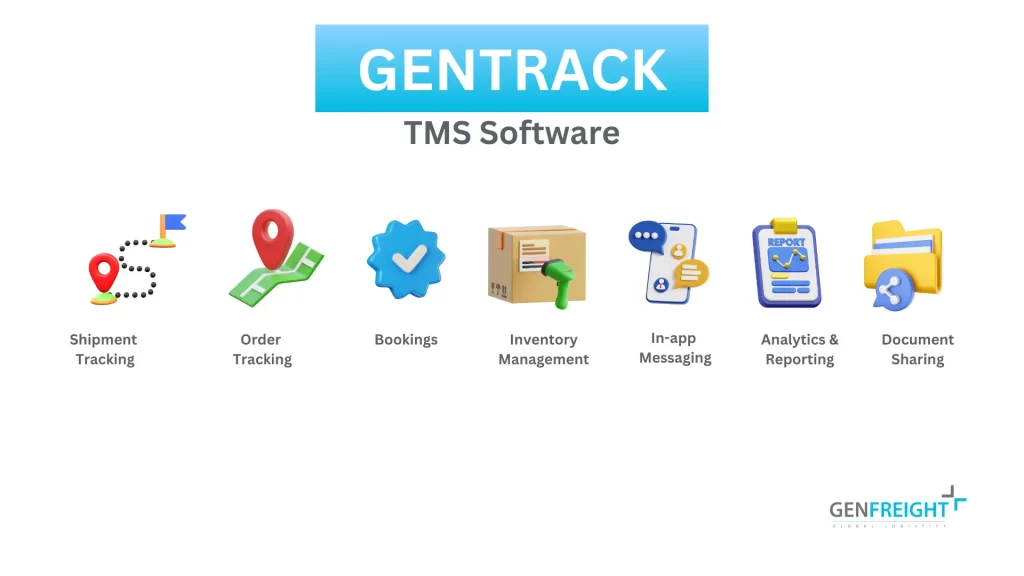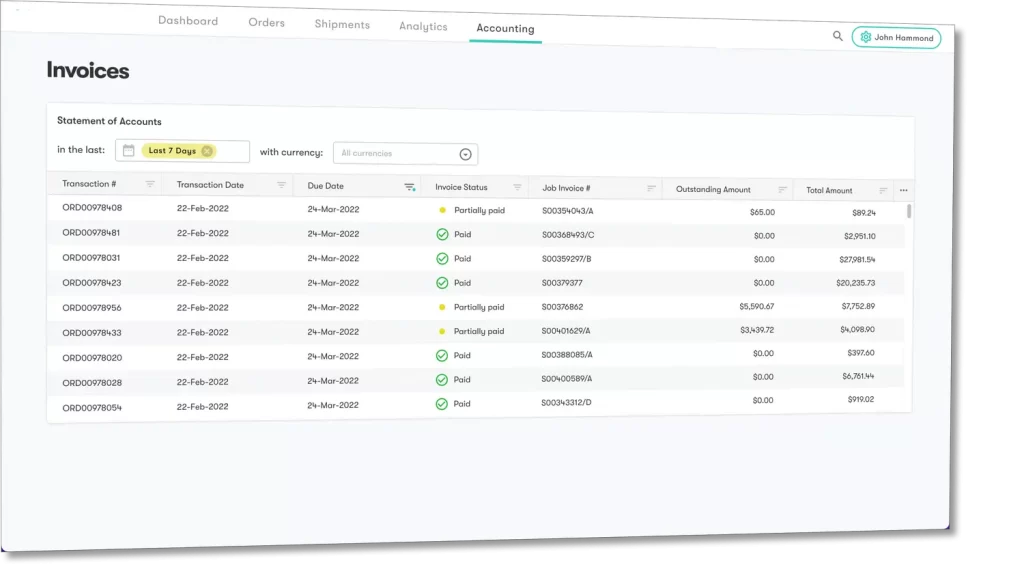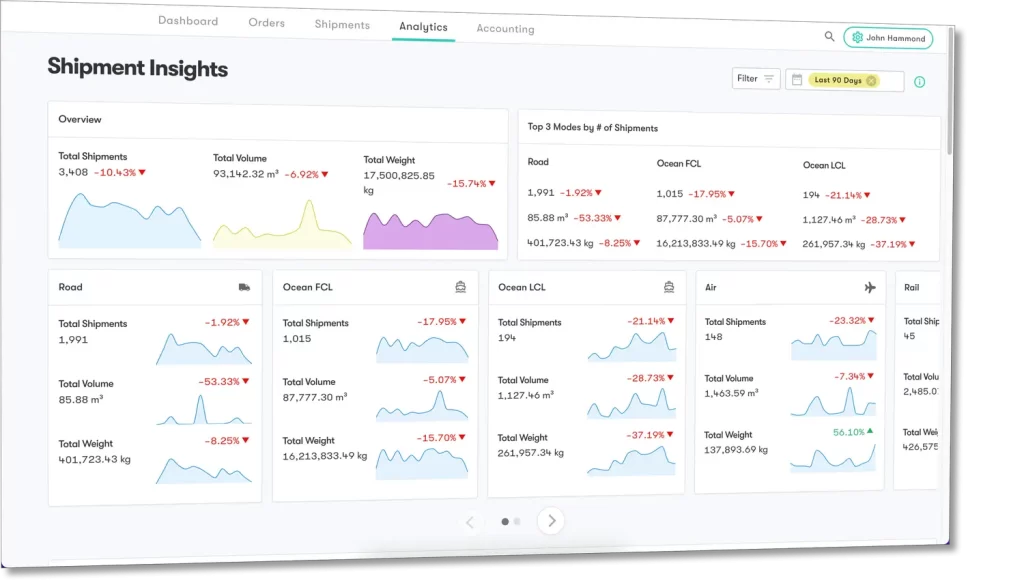Have you ever wondered how complex systems like supply chains are managed and optimised?
Supply chains connect suppliers, manufacturers, distributors, and customers in a smooth flow. Studies show that businesses using advanced supply chain technologies see up to a 15% increase in operational efficiency.
What is Supply Chain Management (SCM)?
Supply Chain Management (SCM) is the strategic coordination of activities involved in producing and delivering goods. These activities include planning, sourcing, making, delivering, and returning. Each component is interconnected, forming the backbone of global commerce. Managing a supply chain involves many moving parts, so companies face challenges like fluctuating demand, tight schedules, and unforeseen disruptions. To overcome these, many businesses invest in technology to optimise operations. This improves efficiency and enhances the experience for customers. If you’re interested in learning more about supply chain management, check out our article here.
In this article, we’ll explore Supply Chain Management software. We’ll look at different types of SCM tools, with a focus on TMS Software. Additionally, we’ll share real-world examples, including the advanced solution – GenTrack, that GenFreight uses to deliver top-quality services to its customers.
Let’s get started!
What Is Supply Chain Management (SCM) Software?
Supply Chain Management (SCM) software is a set of tools that helps businesses manage their supply chains more effectively. By using these tools, companies can better handle transportation, warehousing, planning, and integration. Also SCM software simplifies the complex tasks in a supply chain, reduces costs. Moreover, it helps to improve customer satisfaction by making everything run more smoothly and providing real-time updates.
Types of Supply Chain Management Software
SCM software consists of several specialised tools, each addressing a critical component of the supply chain:
Transportation Management Systems (TMS)
A TMS helps businesses manage the movement of goods from one place to another. Additionally, it helps with planning routes, tracking shipments in real time, and providing data that helps make better decisions. Thus, TMS software assists companies save time and money while making sure deliveries are on time. We will explore this more later in the article.
Warehouse Management Systems (WMS)
WMS helps businesses run their warehouses more efficiently. For instance, it enables managing inventory, picking orders, storing products, and organising the workforce. As a result, using WMS helps reduce mistakes, improve productivity, and keep inventory accurate. This system is especially important for businesses that handle a lot of goods and need to fulfill orders quickly.
Enterprise Resource Planning (ERP) Systems
ERP systems help businesses connect different parts of their operations, including supply chain, finance, and human resources. In fact, ERP systems can work together with TMS and WMS, allowing businesses to manage all parts of their supply chain more easily and efficiently. Consequently, this connection helps make sure the business runs smoothly, with consistent data across all departments.
Supply Chain Planning (SCP) Software
Supply Chain Planning (SCP) software helps businesses plan better by analysing data and predicting what will happen in the future. Thus, it helps businesses plan production schedules, stock levels, and how products will be distributed. Therefore, this software helps businesses make smarter decisions and stay flexible when things change.
In the next sections, we will dive deeper into TMS software and its important role in today’s supply chain. So, keep reading to see how this technology helps businesses stay ahead in a fast-moving world.
Core Components of a Transportation Management System
- Transportation Planning and Execution
TMS software assists in planning optimal routes and transportation modes. Additionally, it automates scheduling and ensures efficient execution of shipping tasks, adapting to real-time conditions. - Load Planning and Optimisation
This feature allows companies to use truck or container space more effectively. As a result, transportation costs are lowered, and delivery timelines are met. - Carrier Selection and Management
A TMS evaluates carriers based on their performance, rates, and availability. Therefore, it ensures the best carrier is chosen for each shipment and supports ongoing management of carrier relationships. - Freight Rating and Payment
TMS automates the calculation of freight costs and manages payment processes. Consequently, this reduces errors and provides businesses with better budgeting insights through cost analysis. - Shipment Tracking and Visibility
Real-time shipment tracking is one of the most important features of TMS. In addition, it offers full transparency across the supply chain, allowing businesses and customers to track progress and get alerts about delays. - Reporting and Analytics
TMS collects and analyses transportation data, which helps businesses improve efficiency, cut costs, and make informed, data-driven decisions.
What is TMS Software?
TMS (Transportation Management System) Software is a powerful tool designed to optimise and improve the entire transportation and logistics process. It helps businesses manage and control various aspects of their supply chain, including carrier selection, shipment planning, execution, and tracking.
Key Benefits of TMS software:
You’ve accurately highlighted the primary advantages of implementing a TMS software:
- Cost Reduction
- Automated Carrier Selection. Firstly, TMS can automatically select the most cost-effective carriers based on real-time rate comparisons.
- Optimised Load Planning. Secondly, the software efficiently planning the use of space in trucks and containers. As a result this reduces unnecessary costs.
- Streamlined Billing. Thirdly, automation of billing processes reduces administrative time, paperwork, and potential errors.
- Improved Efficiency
- Real-time Tracking. Also TMS allows for the tracking of shipments in real-time, which improves visibility and allows businesses to resolve issues quickly.
- Automated Route Planning. By optimising routes, businesses reduce transit times and fuel consumption, leading to more efficient deliveries.
- Streamlined Workflows. Moreover, TMS helps automate repetitive tasks, reducing manual errors and increasing productivity.
- Enhanced Visibility and Control
- Proactive Issue Resolution.Firstly, the software helps identify potential delays early, allowing businesses to take corrective actions before they impact the schedule.
- Improved Customer Communication. Secondly, TMS ensures businesses can provide accurate ETAs and proactive updates, improving overall customer satisfaction.
- Data-Driven Decision Making. Thirdly, with real-time data at hand, businesses can make informed, timely decisions about their operations.
- Better Decision Making
- Data-Driven Insights. Additionally, TMS software collects and analyses historical data, helping businesses spot trends and make decisions that optimise future operations.
- Compliance and Risk Mitigation
- Regulatory Compliance. Furthermore, TMS ensures that transportation and customs requirements are followed, helping businesses stay compliant.
- Risk Management. Finally, by identifying potential risks like delays, damages, and security issues early, businesses can mitigate these risks effectively.
Key Features of a Modern TMS software

A modern TMS software offers a range of advanced features that go beyond traditional logistics software. These functionalities not only streamline transportation processes but also improve decision-making and boost operational efficiency. Below are some of the key features:
- Transportation Planning and Execution
- Automate Carrier Selection and Booking. Firstly, a modern TMS simplifies carrier selection by comparing real-time rates. This helps businesses choose the most cost-effective and reliable carriers.
- Choose Optimal Transportation Modes and Routes. Secondly, the system helps businesses select the best mode (air, ocean, truck, or rail) and route based on cost, delivery time, and efficiency.
- Real-Time Shipment Tracking. Thirdly, TMS platforms provide live updates on shipment progress. This allows companies to proactively manage delays or disruptions.
- Freight Management
- Streamline the Quote-to-Contract Process. Also TMS platforms make it easy to generate quick and accurate quotes. They also help businesses finalise contracts smoothly.
- Multimodal and Intermodal Transportation. Moreover, businesses can manage various transportation modes (air, ocean, road, rail) for global operations. This ensures smooth coordination of costs, rates, and billing.
- Cost Control and Visibility. Additionally, freight cost management tools provide businesses with insights into spending patterns. As a result, companies stay within budget while optimising efficiency.
- TMS Dashboards, Reporting, and Analytics
- Insightful Reporting. Furthermore, TMS systems generate detailed reports on transportation demand, carrier performance, and profitability. This helps companies identify strengths and areas for improvement.
- Real-Time Data for Decision-Making. Also modern TMS platforms use real-time analytics. This provides businesses with up-to-date information, allowing them to adapt quickly to disruptions and optimise their operations.
- Forecasting and Optimisation. Lastly, by predicting future transportation needs, TMS software helps businesses plan shipments, reduce costs, and improve service delivery.
How a TMS Works
TMS software works by integrating with other supply chain software systems to create a seamless flow of information and operations.
Integration with Other Supply Chain Software:
- ERP (Enterprise Resource Planning)
- Order Management. Firstly, TMS receives order information from the ERP, including shipping details, delivery addresses, and product specifications.
- Invoicing. Once shipments are completed, the software can send shipment data back to the ERP for invoicing and accounting purposes.
- WMS (Warehouse Management System)
- Inventory Management. Also the software receives inventory data from the WMS. This includes product dimensions, weight, and quantity. It helps optimise load planning and carrier selection.
- Shipping and Receiving. Moreover, the WMS provides information on shipment readiness and delivery schedules. This helps TMS plan efficient routes and allocate resources properly.
Who Uses TMS Systems?
Here are some of the key industries that benefit most from TMS:
- Retail, Automotive, and Manufacturing
These industries rely on efficient transportation management for both inbound and outbound shipments.
- Retailers use TMS to manage supply chains, ensure timely deliveries, and meet customer demands.
- Automotive companies require software to coordinate parts delivery from suppliers to manufacturers.
- Manufacturers use systems to streamline product distribution and manage inventory across multiple locations.
- Pharmaceutical & Healthcare
Pharmaceutical and healthcare sectors depend on TMS software to ensure accurate, timely, and compliant deliveries, especially for temperature-sensitive goods.
- Pharmaceutical companies need to manage the delivery of medicines, vaccines, and other healthcare products that require strict temperature controls.
- Healthcare providers use TMS to manage equipment and medical supplies, ensuring they reach hospitals, clinics, and pharmacies on time.
- Food Service & Restaurants
For businesses in the food service and restaurant industry, TMS ensures the timely delivery of perishable goods, maintaining freshness and quality.
- Food distributors rely on TMS to monitor the transport of perishables to various restaurants and grocery chains.
- Restaurants and food service chains use TMS software to manage the inbound flow of ingredients, ensuring they have fresh stock on time.
- Logistics Providers
Undoubtedly, logistics providers, who manage complex transportation networks, are key users of TMS.
- 3PLs (third-party logistics providers) use software to handle freight for multiple clients, optimise routes, and manage different transportation modes. In general, they rely on TMS to monitor carrier performance, manage freight costs, and improve service levels for their clients.
- E-Commerce Businesses
Since the growing demand for e-commerce, adoption of TMS in the retail sector has increased. E-commerce companies need TMS to manage high volumes of deliveries, especially during peak seasons like holidays or sales events. The software helps e-commerce businesses manage last-mile deliveries, improve delivery speed, and enhance customer satisfaction by meeting shipping expectations.
What is the best TMS software?
Determining the best transportation management system (TMS) depends on your business needs, budget, and operational complexity. Here are some top TMS software options and their key features:
Popular TMS Software
- Oracle Transportation Management (OTM)
- Pros. Firstly, it offers a comprehensive range of features, making it ideal for large-scale logistics operations.
- Cons. However, its implementation can be complex, and it often requires significant customisation.
- e2open
- Pros. It focuses on global logistics and international trade, making it suitable for businesses with global operations.
- Cons. But for smaller businesses, it might be unnecessarily complex and overly feature-rich.
- MercuryGate
- Pros. Known for its user-friendly interface and excellent customer support, it’s a great option for mid-sized companies.
- Cons. On the downside, it may lack the advanced features needed for highly complex supply chains.
- Manhattan Associates
- Pros. Generally this system excels in warehouse management and integrates seamlessly with other supply chain tools.
- Cons. Yet, its high costs and complexity might be a barrier for smaller businesses.
- Shipsi
- Pros. Designed for small to medium-sized businesses, it is cloud-based, simple to use, and highly accessible.
- Cons. Nonetheless, it may not offer the scalability or advanced options required by larger enterprises.
Key Factors to Consider When Choosing a TMS
- Scalability. Firstly, the ability to grow with your business.
- Integration Capabilities. Secondly, seamless integration with other systems like ERP, WMS, and TMS.
- User-Friendliness. Thirdly, an intuitive interface that is easy to learn and use.
- Customisation Options. Additionally, the ability to tailor the software to your specific needs.
- Real-time Visibility. Moreover, tracking shipments in real-time.
- Advanced Analytics. Also, data-driven insights to optimise operations.
- Customer Support. Furthermore, reliable and responsive customer support.
- Cost. Finally, the initial cost of the software and ongoing maintenance fees.
GenTrack: A Powerful TMS Solution

GenTrack is more than just a Transportation Management System (TMS). It is, in fact, a comprehensive solution designed to help businesses take full control of their supply chain operations. With a client-first approach, GenTrack simplifies complex processes, offers valuable insights, and ensures you stay informed at every step. Below is a closer look at its features and how they can benefit your business:
Key Features and Benefits
1.Real-Time Shipment Tracking
Stay informed from start to finish. GenTrack provides live GPS tracking, so you can monitor shipments across all transport modes. Additionally, it sends instant notifications about delays, holds, or potential fees, giving you the transparency you need to act quickly.
Why it matters for you:
- Peace of mind. Firstly, always know where your shipments are.
- Faster problem-solving. Also, immediate updates allow for quick action when issues arise.
- Smooth customs processes. Additionally, stay compliant with up-to-date customs details.
2. Self-Service Bookings

Empower your team with convenience. With self-service booking, clients can initiate shipment requests and collaborate seamlessly with GenFreight’s team. This, in turn, reduces back-and-forth communication and creates a more streamlined approval process.
Why it matters for you:
- Saves time. Simplify the booking process by managing it in one place.
- Collaborative decisions. Additionally, choose options that fit your needs with clear, real-time communication.
- Customer convenience. Furthermore, faster bookings mean faster deliveries.
3. Purchase Order Tracking
Plan smarter, act faster. GenTrack allows clients to track product SKUs from purchase order to final delivery. Real-time updates keep you informed about order milestones, factory dispatch times, and expected arrival dates. The platform even supports collaboration with third-party agents or suppliers.
Why it matters for you:
- Better inventory planning. Stay ahead by knowing exactly when products will arrive.
- Transparency. Moreover, view every stage of the order lifecycle at a glance.
- Collaboration. Furthermore, include suppliers and agents in the tracking process for better coordination.
4. Warehouse Inventory Management
Complete inventory visibility. GenTrack offers real-time insights into your warehouse operations. For instance, it includes detailed inventory counts, order statuses, expiration dates, and product dimensions. Additionally, clients can manage incoming goods and submit self-service warehouse orders.
Why it matters for you:
- Reduce waste. Track expiration dates and costs for smarter purchasing decisions.
- Stay organised. Also access receipts and order statuses to streamline warehouse management.
- Improve decision-making. Finally, with a clear view of inventory, reorder only when necessary.
Why We Chose GenTrack

At GenFreight, we understand that technology plays a very important role in delivering outstanding logistics services. Therefore, we have integrated GenTrack into our operations to equip our clients with tools that truly make a difference.
- Efficiency. Firstly, by automating tasks, you can significantly minimise errors and, as a result, complete more work in less time.
- Control. Secondly, from bookings to delivery, you can always maintain comprehensive visibility and control over every supply chain aspect.
- Customer satisfaction. Thirdly, with transparency and real-time updates, you can easily foster trust and, furthermore, improve the overall client experience.
How GenTrack Works
GenFreight provides our customers with direct access to GenTrack, which enables them to easily track and manage their shipments. Moreover, the platform is accessible anytime, anywhere, offering real-time updates and the essential tools needed for businesses to stay on top of their logistics needs.
If you’re looking for a professional freight forwarder who not only understands the importance of advanced technologies in supply chain management, but also actively invests in them, contact GenFreight. Let us help you optimise your transportation operations and provide the seamless service your business deserves. Ultimately, we are ready to support you in navigating the complexities of global logistics.
